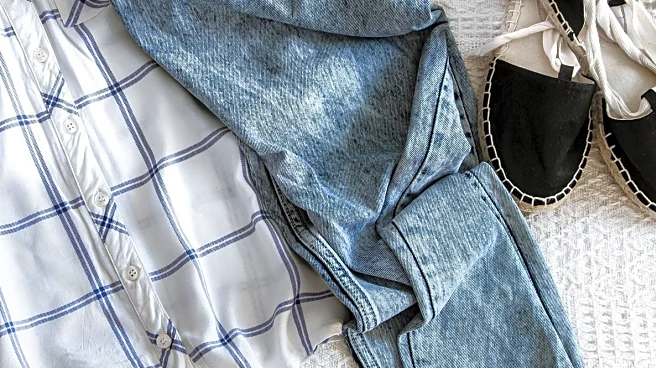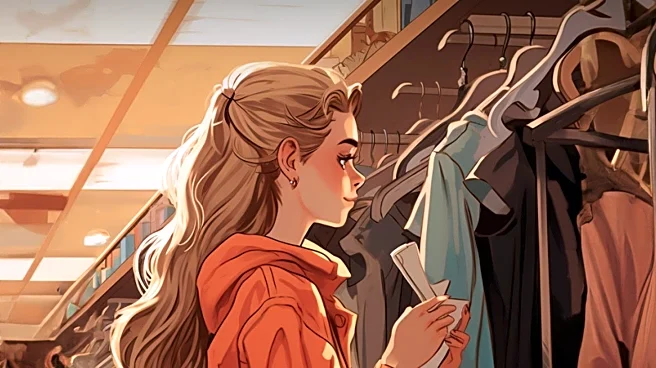What's Happening?
Julia, a 21-year-old thrift store enthusiast, was left astonished after discovering a collection of designer items during a recent shopping trip. Among the finds were a designer maxi dress, Coach wedges,
Gucci perfume, and a Chanel flap bag. Despite the excitement, Julia refrained from purchasing due to high prices, with the Chanel bag listed at $250. Her discovery, shared on social media, quickly went viral, garnering over 1.6 million views and sparking widespread interest. Julia's experience highlights the allure of thrifting, where unexpected treasures can be found at bargain prices.
Why It's Important?
Julia's viral thrift store discovery underscores the growing popularity of thrifting as a sustainable and cost-effective shopping option. This trend reflects a shift in consumer behavior towards valuing secondhand items, driven by environmental concerns and the desire for unique fashion pieces. The viral reaction to Julia's finds highlights the role of social media in amplifying thrift culture, influencing fashion trends and consumer choices. As more individuals turn to thrifting, it may impact the retail industry, encouraging brands to explore sustainable practices and cater to the demand for vintage and secondhand goods.
What's Next?
The increasing interest in thrifting may lead to a rise in thrift store popularity and expansion, with more locations offering curated selections of high-quality secondhand items. Retailers may also respond by incorporating sustainable practices and vintage-inspired collections to attract eco-conscious consumers. As social media continues to play a significant role in promoting thrift culture, influencers and brands may collaborate to create content that highlights the benefits of thrifting. Additionally, the trend may prompt discussions about the environmental impact of fast fashion and the importance of sustainable consumer choices.
Beyond the Headlines
Julia's thrift store experience raises broader questions about the cultural significance of thrifting and its role in promoting sustainable fashion. It challenges traditional retail models, encouraging consumers to consider the environmental and ethical implications of their purchases. The viral nature of Julia's discovery highlights the power of social media in shaping fashion trends and consumer behavior, potentially influencing industry practices. As thrifting gains popularity, it may inspire discussions about the value of secondhand goods and the importance of reducing waste in the fashion industry.











